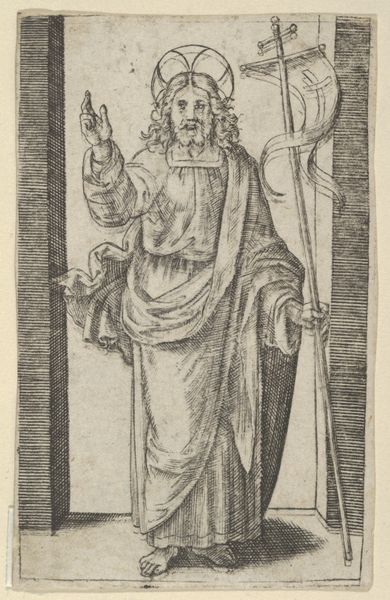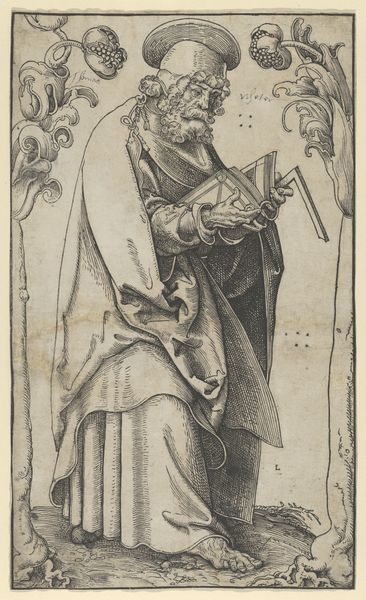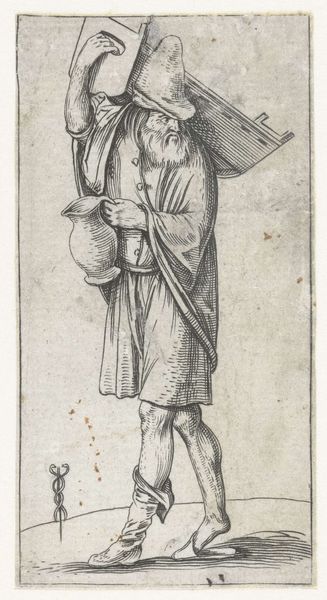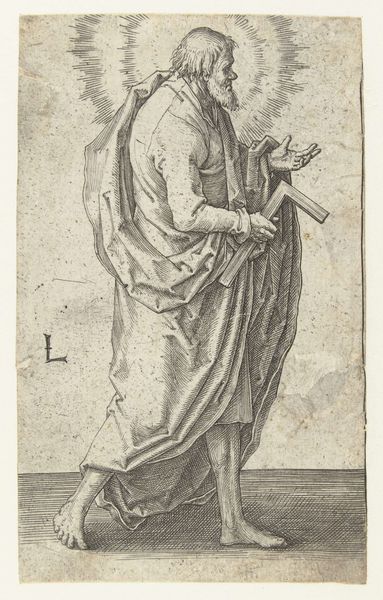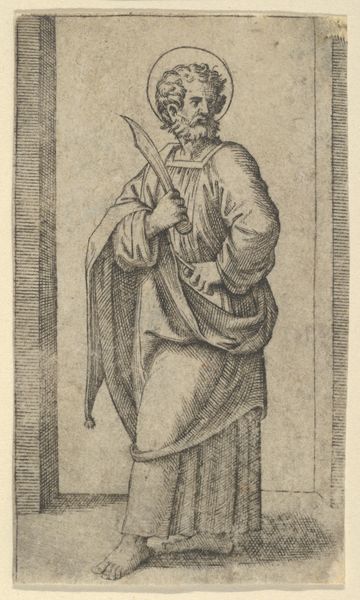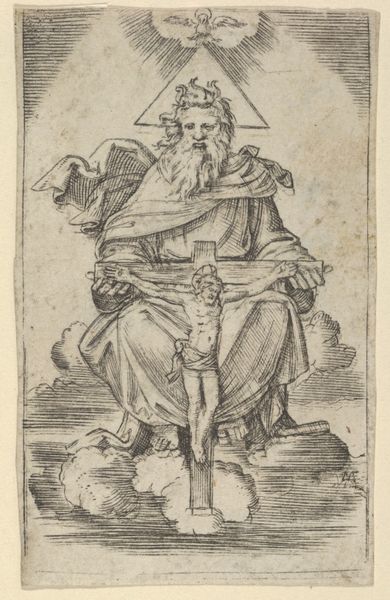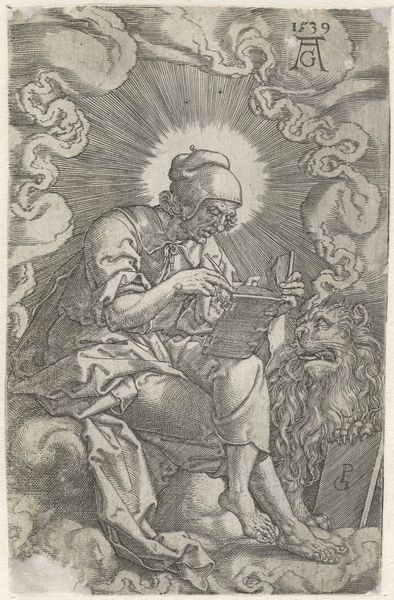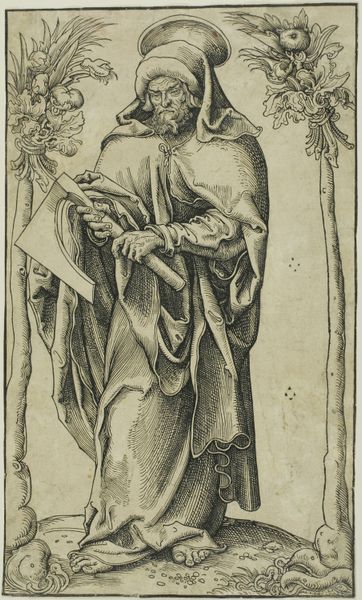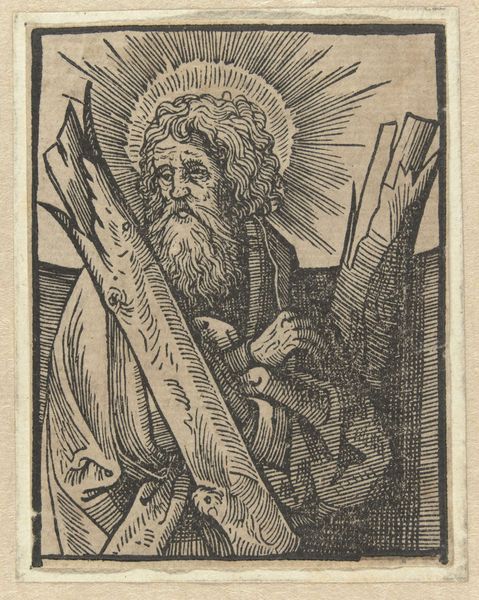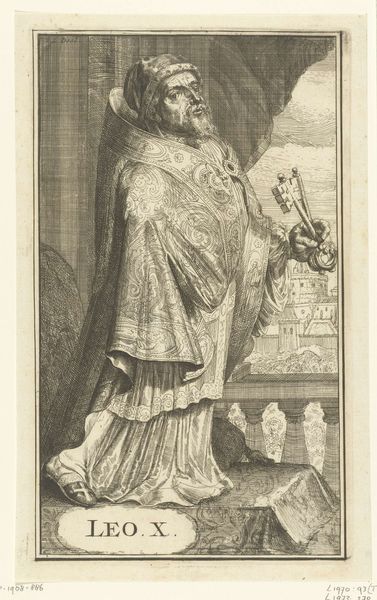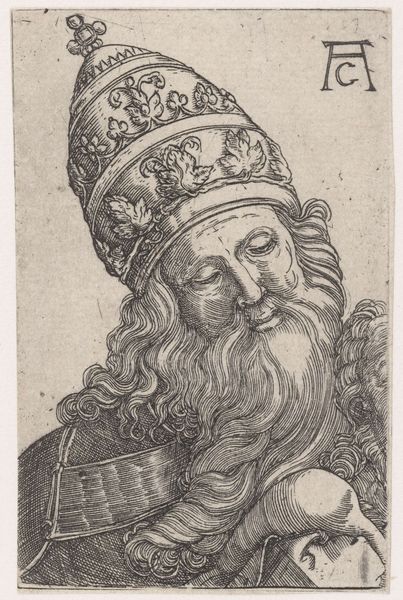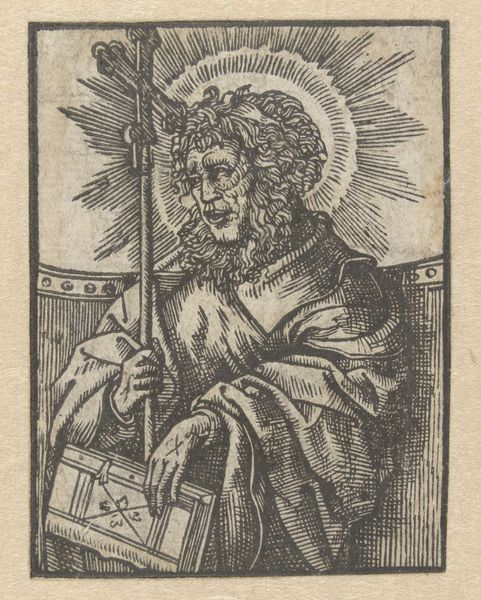
print, engraving
portrait
pencil drawn
figuration
pencil drawing
line
history-painting
italian-renaissance
engraving
Dimensions: height 176 mm, width 122 mm
Copyright: Rijks Museum: Open Domain
Editor: So, this engraving is called "Standing Christ Making a Blessing Gesture" by Jacob Binck, created sometime between 1510 and 1569. It’s quite detailed for such a small print. What strikes me most is the stark contrast between the smooth, almost idealized face of Christ and the incredibly textured rendering of his robes. How do you interpret this work, considering its formal qualities? Curator: A close inspection reveals how Binck manipulates line to generate form and meaning. Note the radiating lines emanating from Christ, visually asserting his divine aura. Contrast this with the denser, more chaotic lines creating the drapery. How does the artist use line to differentiate between the divine and the earthly? Editor: I see what you mean. The lines around the figure of Christ are much cleaner and clearer, while the robes have this incredibly detailed crosshatching, which feels very different. It gives the robes a much more tactile, almost weighty presence, despite being a two-dimensional print. Is there any significance to the placement of Christ's figure with the floral ornaments at the top, and the globe below? Curator: Indeed, Binck uses formal arrangement to emphasize symbolic meanings. Consider the balance achieved through asymmetry. The globe anchors the figure, representing earthly dominion, while the swirling ornaments provide a celestial framework, highlighting Christ’s transcendent nature. Editor: That’s a brilliant observation; it really clarifies the deliberate construction of meaning through visual elements. I now see it's not just a portrait, but a carefully constructed argument about Christ's place between heaven and Earth. Curator: Precisely. Focusing on these formal choices allows us to understand the deeper theological concepts being conveyed through purely visual means. The artist meticulously orchestrates these details to provoke both admiration and contemplation. Editor: That's so helpful. I appreciate how a focused study of line and form can reveal so much about the artist's intentions and the artwork’s meaning.
Comments
No comments
Be the first to comment and join the conversation on the ultimate creative platform.
